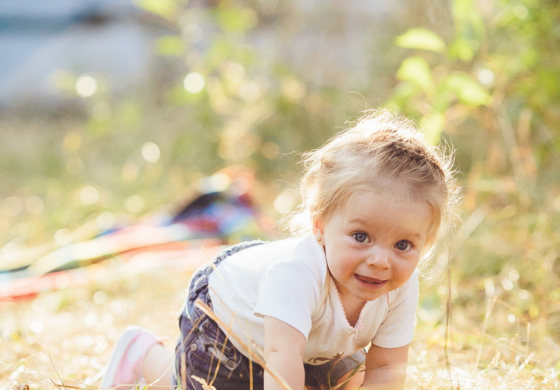Crawling is an important milestone for babies to accomplish. This typically occurs between 6 to 10 months.
Crawling is a reciprocal movement (movement on one side will then be copied by a movement on the other side and continue back and forth) babies used to explore their environment, move from one place to another, become independent, and many other activities.
-
- Building block for other development milestones: walking, running, stair climbing, riding a bike, etc.
- Bilateral Coordination: weight shifting through arms/shoulder and through legs/pelvis; and trunk sidebending/elongation
- Strength Improvements:
- Strengthens neck and and shoulder muscles to help with self-feeding, dressing, holding a crayon and other fine motor skills
- Strengthens the core to prep for other gross motor skills
- Sensory Exploration
- Motor Planning
- Vision: encourages environmental scanning and other vision development
- Neurological development: prepares for future reading and writing development
There are several methods of crawling you may see with your baby. We encourage kiddos to crawl on all fours to promote the above benefits, prep for later development skills, and prevent asymmetries. Below are a few of the various crawling movements you may see.
- Classic hands and knees: bears weight on hands and knees them moves one arm and opposite knee forward at the same time
- “Bear” crawl: looks similar to classic crawl, but keeps elbows and knees straight walking on hands and feet
- “Crab” crawl”: bends one knee and extends the opposite leg to scoot forward
- “Commando” crawl: lies flat on their belly and drags themself forward using only their arms
- Bottom Scooter: scoots around on their bottom using arms to move self forward
You will begin to notice the following activities when your baby is preparing to begin crawling:
- A desire to move: forward, backward, to the side, rolling
- To encourage movement, engage baby with a toy and have them reach out for it, slowly move the toy further away
- Teaches baby to reach for it but also have to work to move their body
- Pivoting on their belly: this promotes movement using one side more than the other
- Place a toy to the side of baby just out of reach to encourage pivoting to one side or the other
- Pushing backwards: encourages the use of both sides in a coordinated matter
- Pushing backwards uses a baby’s arms to help and it is easier than moving forward
- Play in a kneeling position: strengthen trunk, weight bear through hands
- Crawling over legs, pillows, or other obstacles
- More of a challenge to stay on their belly when crawling over an obstacle; forced to lift up to clear the obstacle
- Crawl up stairs
- Place toys at different heights for reaching
- Use tunnels
- Place hands on a support surface and move that slowly forward to help them move their knees.
If you notice your little one having difficulty with crawling skills please reach out to us and we can get you the help you need! 🙂
Photos: Canva
